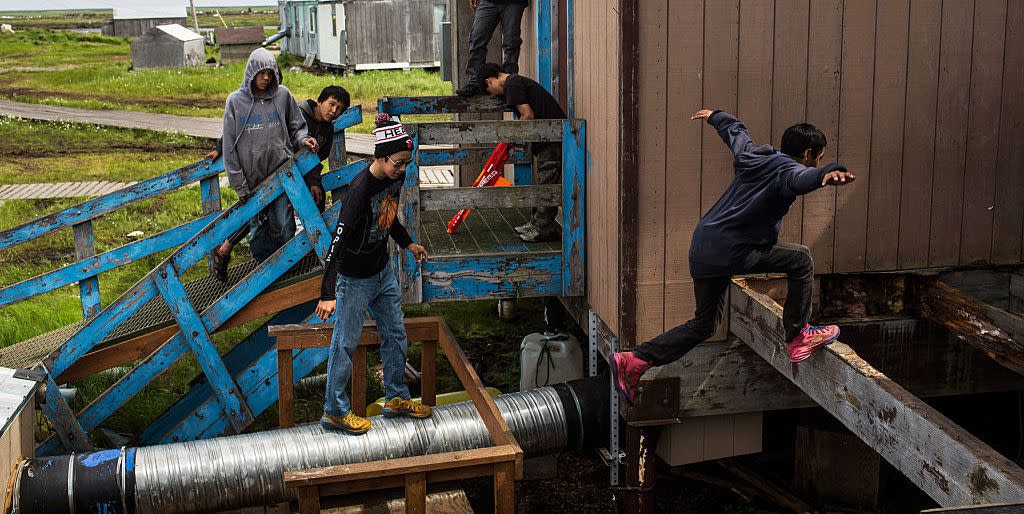Climate Change Could Pummel Alaskan Infrastructure

Before the Gold Rush, before Seward's Folly, even before its earliest Aleut settlers thousands of years ago, Alaska had permafrost. The frozen ground makes up almost 85 percent of Alaska. But global warming is proving to be a threat to both the permafrost and the manmade structures that reside on top of it. A new study shows that "nearly four million people and 70 percent of current infrastructure" will be affected by permafrost damage in the next 30 years.
Like many aspects of climate change, melting permafrost would know no borders. Russian infrastructure in the Ural Mountains, from railways connecting the large country to oil pipelines that account for over one-third of the European Union’s pipeline imports, would face new challenges. Damage to this infrastructure is likely to be seen across the globe even "under a scenario consistent with the Paris Agreement," according to the study.
Worse, melting permafrost contributes to global warming itself. As icy ground tens of thousands of years old thaws, microbes can convert it into methane and carbon dioxide. This sort of natural global warming, which could contribute as much as 1.7 degrees Fahrenheit to the climate over the next 300 years, would be fine in a vacuum. But it occurs within the context of massive human contributions of carbon dioxide to the environment, leading to man-made climate change that is forcing the planet into warmer and warmer conditions.
Scientists have known about the threat of melting permafrost for some time now.In 2017, the New York Times interviewed Vladimir E. Romanovsky, a permafrost researcher at the University of Alaska, Fairbanks, who told the paper that temperatures at a depth of 65 feet have risen by 3 degrees Celsius (about 5.5 degrees Fahrenheit) over decades. In some shallow areas, temperatures have risen from minus 8 degrees Celsius to minus 3.
“Minus 3 is not that far from zero,” Dr. Romanovsky said at the time. All trends continue to towards point a warming.
The small village of Newtok made the drastic decision to move, in part due to melting permafrost, back in 1994. Amidst a massive spending bill signed by President Trump this year, the town received $15 million to help with its relocation due to climate change. Newtok will likely need over $100 million to fully relocate.
Permafrost is also crucial to the Alaska's ecosystem. Rainfall is uneven throughout the state, with regions like the Seward Peninsula and the Great Kubuk Sand Dunes functioning like deserts. The permafrost is a great equalizer-it keeps precipitation from running off. The environment of Alaska's famed arctic tundra, including various grasses, berries and flowers, are reliant on permafrost.
By 2050, according to the report, both man and nature will face radical challenges in living on many areas of permafrost.
“[This is] yet another study confirming the overwhelming evidence that our rapidly changing climate is impacting every facet of the globe, and every aspect of human civilization,” says Penn State's David Titley, the paper's lead author, speaking to Earther. “I like to say this is part of the carbon tax we are being forced to pay, whether you ‘believe’ in climate change or not. And p.s., the ice doesn’t actually care if you accept the science or think this is all a hoax - it just melts.”
('You Might Also Like',)

